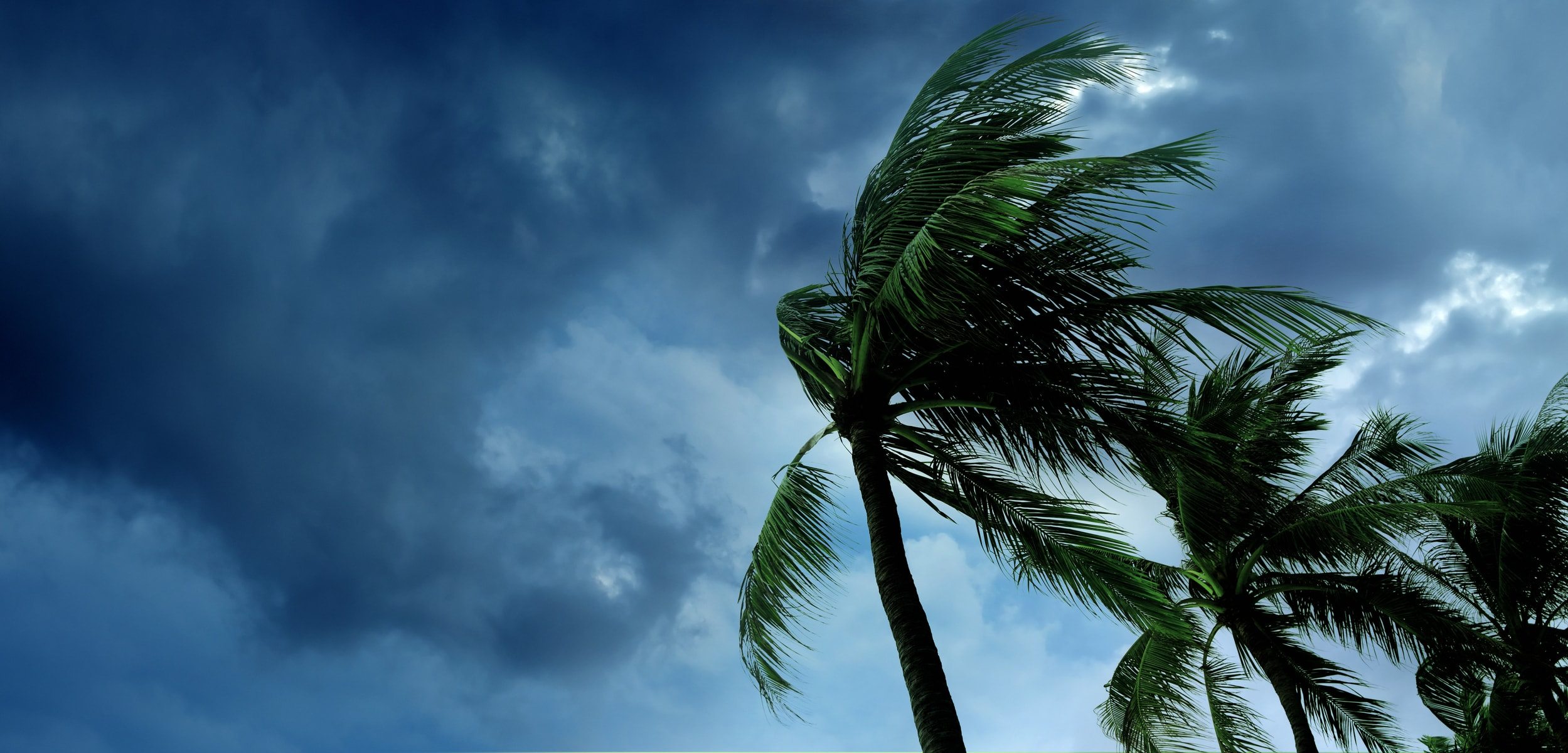
How Life Care Services Managed Its Communities Through Hurricane Irma
When natural disasters strike, the media often focuses on the individuals affected by such grueling events, as they pack up, board up their homes, and gather their belongings.
But when storms strike near large senior living communities—where hundreds of seniors’ lives are at stake—an even greater level of planning and preparation is necessary.
Earlier this month, Hurricane Irma posed such a threat to several communities that Life Care Services manages in Florida. Staff members worked tirelessly leading up to, during, and after the storm to make sure residents were safe and comfortable.
Advance preparation is key
When the news spread that Hurricane Irma would make landfall in Florida, each community was already ahead of the game.
Each community Life Care Services manages has its own emergency preparedness plan that addresses how and when things will be handled in an emergency. According to Sandy Pennington, senior director of marketing—Rental Division for Life Care Services, these plans don’t just cover hurricanes, but also “chemical spills, earthquakes, and other disasters that might occur.”
“We have a full emergency management plan. We review it monthly to tweak anything we need to update,” added Charles James, executive director of Beach House Assisted Living and Memory Care in Jacksonville, Florida.
Days before Irma arrived, calls between the LCS Home Office and the communities in the potential path of the storm began. Each community discussed its options and whether it would shelter in place, evacuate, or take in residents from other communities, explained Dan Kosmicki, LCS director of risk management. Communities also had to be sure they had enough supplies on hand to support their decision, referring to their emergency plans for reference.
According to Kosmicki, in situations such as this, it’s up to the communities to decide what they will do during the storm, but through these discussions, they will consider many viewpoints.
“We don’t necessarily make the decisions for them,” Kosmicki said. “There are a lot of parties in place. The county’s safety recommendations are taken into consideration; everybody’s perspective is considered. And if we don’t have everyone on that call that we need, we communicate with them and make sure we’re on the same page.”
Sheltering in Place: Élan Spanish Springs and Élan Buena Vista
Élan Spanish Springs and Élan Buena Vista in The Villages in central Florida decided to shelter in place during Hurricane Irma.
Executive Director Katie Harvey said she made the decision in alignment with the LCS Risk Management and Operations team and based on the weather predictions.
The two communities prepared for the storm by removing all exterior objects that could become airborne; refueling the generator; and ensuring enough food, water, and medication was on hand to last ten days for the residents, their families, and staff. They also updated emergency contacts for all staff and residents and kept their website current to inform families of the status of the communities.
Though the Élan communities sustained minor damage such as water intrusion and a few downed palm trees, otherwise, all is now well.
“Our effort to keep operations as normal as possible—along with the overwhelming selflessness of the staff—was appreciated by residents and their families,” Harvey said. “Our level of operations and hospitality throughout a time of disaster was something I’m very proud of.”
Evacuation: Beach House Assisted Living and Memory Care
Beach House Assisted Living and Memory Care in Jacksonville, Florida, decided to evacuate the community for the duration of the storm.
Executive Director Charles James said the community was especially prepared for Irma, as it had evacuated last year during Hurricane Matthew. Although Beach House is a category four community—built to withstand strong storms—James said he weighed their options with the LCS Home Office and the fire marshal and decided to be proactive, before the mandatory evacuation notice was issued for Jacksonville.
Prior to the evacuation, James and his staff started communicating with residents’ families, updating them on their procedures and possible evacuation plans.
“On that Thursday, after we saw it was going to hit us…we decided to evacuate,” he said. “So, we called the bus company, called the community we were going to stay with, and contacted all of the families to tell them we were going to evacuate.”
He said some residents went to stay with their families, but some families felt their loved ones would be better taken care of by Beach House, considering how well the evacuation for Hurricane Matthew went last year.
On Friday morning, the residents evacuated to nearby Clarity Pointe in Tallahassee. Residents climbed aboard a bus; a U-Haul truck followed with wheelchairs and other supplies. Beach House had also rented and reserved 20 hospital beds at Clarity Pointe for any residents who might require them.
The evacuation started at 10 a.m. and residents were moved in and sitting down to a nice lunch at Clarity Pointe by 12:30 p.m.
James frequently updated residents’ families by posting photos and messaging them through Facebook, and they had James’ personal cell phone number in case they wanted to talk directly with their loved ones.
“I updated them on a daily basis on the food we were having and the different activities we were doing at our ‘Hurricane Slumber Party,’” James said. He added that his staff’s dedication blew him away.
“The director of health services, culinary director, and activities director, all camped out there for the whole three days. They have families of their own, and they came to Clarity Pointe because they understand what we do,” he said. James even celebrated his birthday while at Clarity Pointe!
The residents were safely transported back on Tuesday morning, and everyone was back to their home at Beach House Jacksonville by 1 p.m. The community was untouched by the storm, but James said all were glad they were proactive and evacuated.
Receiving Residents from Other Communities: Bayshore Memory Care
Bayshore Memory Care in Naples, Florida, took in 224 displaced residents, residents’ family members, staff, and staff family members—not to mention 20 pets—during Hurricane Irma.
Executive Director Alisha Pratt said she made the decision to accept residents after assessing the viability of her community, available space, and resources.
“I couldn’t live with myself if I had turned away vulnerable seniors who were then negatively impacted by the storm. You have to be empathetic and willing to help others during these desperate situations,” Pratt said.
In the days leading up to the hurricane, Pratt said they made sure there was enough food, water, and medication in their supplies to last seven days. They had their emergency generator inspected and worked diligently to reassure family members that their loved ones would be safe at Bayshore.
“As Hurricane Irma bore down on our area, things became very hectic very fast,” Pratt said. “We began receiving phone calls from other senior living communities and from the public at large requesting shelter.”
Pratt said Bayshore was lucky the community had a few vacant units that they used to house residents from The Glenview at Pelican Bay and Kiva House communities.
“As the eye of the storm approached our area, we moved everyone into the interior hallways and away from windows to ride out the storm,” Pratt said. “We were able to mobilize in 10 minutes.”
Pratt said teamwork was the main theme throughout the disaster, adding that her management team was selfless and willing to help—even though they had their own homes and families to take care of during the storm.
Since the storm, Bayshore has moved in some seniors from communities that sustained damage and is still receiving more temporary residents each day.
Communication proved invaluable
Throughout the storm, communities were constantly communicating with the LCS Home Office, their own staff members, and other communities in the area to make sure everyone had enough supplies and knew emergency procedures.
The LCS Home Office held two calls a day with executive directors of the affected communities. When phone lines were down, they communicated through email, Facebook, and other channels.
“I think there was a lot of good, frequent communication between the team members, community staff members, executive directors, and me,” said Warren Naviasky, vice president and senior director of marketing and sales for the For-Profit Division of Life Care Services. “We were texting each other regularly. Communication was really strong. From a global perspective, it was a success how coordinated everything was.”
Naviasky and Pennington facilitated updates to the LCS website along with communities’ websites twice a day to make sure the families knew residents were safe and comfortable, had food and water, and were being attended to. LCS also has a 24-hour hotline manned by staff at the home office so families could call in.
“When those residents or family members called, comment after comment, they were saying ‘wonderful job’ and ‘thank you so much,’” said Kandy Olinger, LCS safety advisor. “They had more peace of mind knowing what was going on. At the end of the day, that’s what makes us feel good. People were pleased to learn how things were going and what we were doing for their loved ones.”
Contact Sagewood, managed by Life Care Services, for more information on our emergency procedures or visit Life Care Services for more information on our management partner.




